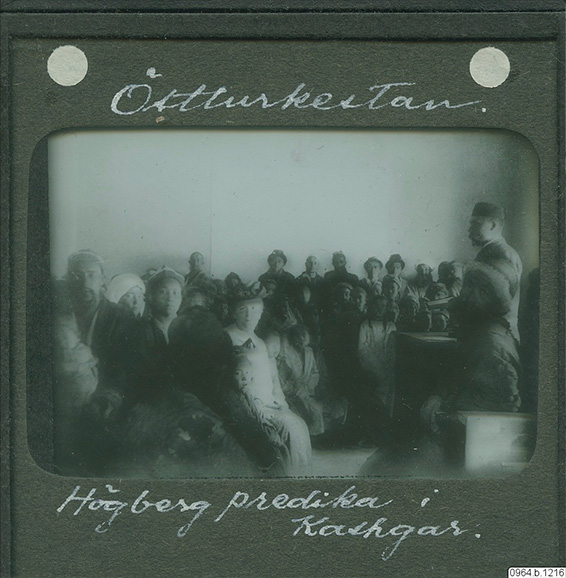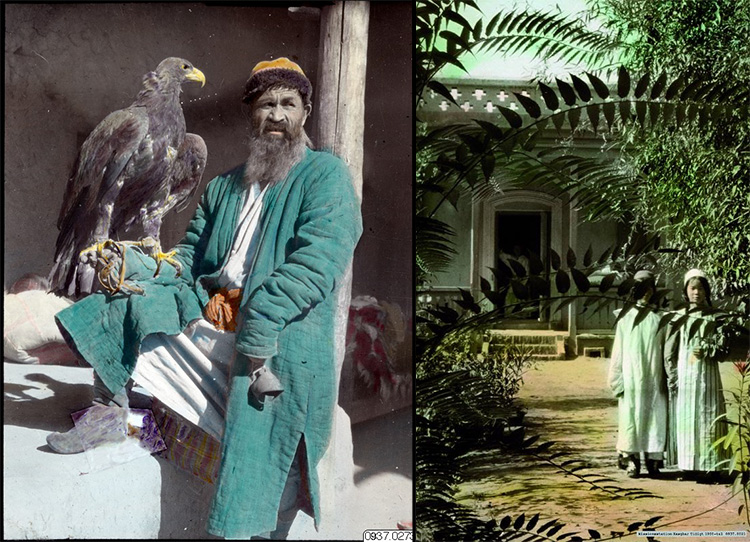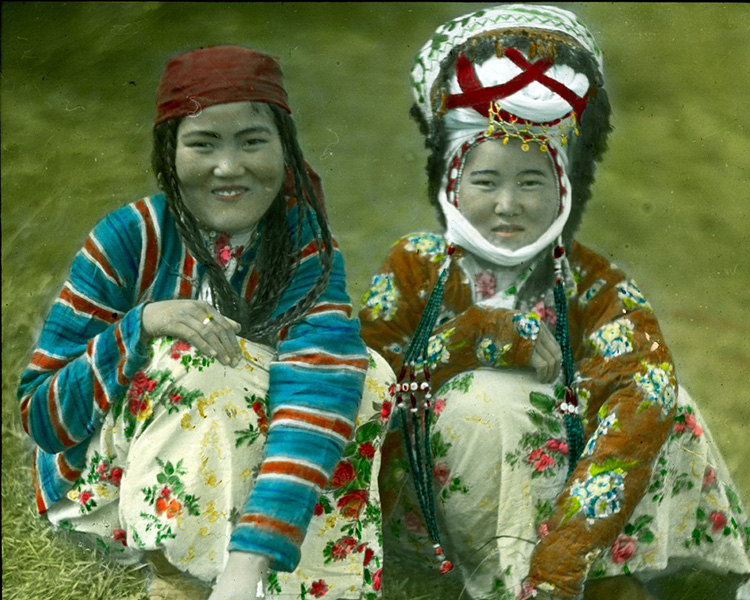
In Swedish museum collections and archives, there is a great deal of material that was collected by Swedish missionaries of the Mission Covenant Church of Sweden. For some years now, there has been a large collection of so-called skioptikonbilder (lantern slides) at the Museum of Ethnography in Stockholm.
These photographs were previously in the Mission Covenant Church of Sweden’s archive in Stockholm. In 2014, however, an agreement was reached between the Mission Covenant Church of Sweden and the Museum of Ethnography in Stockholm to transfer the entire collection of slides to the latter institution. The main purpose was to protect the photographic material and to make it available to researchers, the general public and other interested parties by means of digitalisation.

The main missionary areas for the Mission Covenant Church of Sweden were Congo, Central China (Hubei) and Eastern Turkestan (present day Xinjiang). In the early 1900s, it was common for the missionaries who had returned to Sweden on furlough, to travel around the country and share their experiences from abroad at meetings in mission houses, schools, and larger mission exhibitions.
At these meetings, the missionaries shared their personal experiences and displayed “exotic” cultural artefacts from the various mission areas, including visual material such as photographs and films. Sometimes the missionaries dressed up in folk costumes from the different mission areas.
A striking example can be found in an advertisement in the newspaper Kalmar from 1916 which says that “missionary Gerda Anderson appears in Turkish costume” (i.e., Eastern Turki costume) at a meeting (Kalmar, no 189, Friday 1 December 1916).

Books and mission publications from the early nineteen hundreds often contain a great deal of visual material, and it is clear that considerable resources were put into documenting manners and customs with the aid of the high tech of the day: camera and film. Many of the missionaries in Eastern Turkestan, Central China, Congo, and other mission areas became outstanding photographers. In particular, it was the so-called skioptikonbilder (lantern slides) that were used for photographic presentations around Sweden in the 1920s, 1930s and later. It was considered important that those who supported the mission should be able to see with their own eyes what it looked like in the field.
Obviously, the Mission Covenant Church quickly realised the powerful didactic effects that could be conveyed through the combination of pictures, lectures and mission houses packed with expectant and curious audiences. The photographic presentations thus became an effective means of seeking support for the missions from the friends of the mission in Sweden.

One of the more detailed examples I have found is an article in a copy of the journal Missionsförbundet. Here, the author is of the opinion that the images act as a complement to the verbal descriptions of faraway countries:
"Giving presentations with slides significantly adds to one's understanding of the missions. It is also quite natural that a verbal description of the life of the people in the countries where the mission is working, of the many branches of missionary work and of the living conditions and work of the missionaries ― It is inherent that depicting something with pictures from the mission areas creates a more vivid and lasting impression. You get a richer impression of what you are hearing about in words if you can see it in pictures at the same time" (Missionsförbundet, 15 January 1925, page 45).

Many of the slides at the Museum of Ethnography have been coloured by means of hand colouring and autochrome technology and are of great cultural and historical value. They are a useful source for knowledge and understanding of how different aspects of the societies of Congo, China and Eastern Turkestan were presented a hundred years ago.
It is encouraging to see that most of the pictures in the collections are in surprisingly good condition after having lain closely packed into boxes for more than half a century. Some of them have cracked glass and so on, but in most cases the images are clearly discernible. The work of digitalisation (many, but far from all photographs have been digitalised), inputting metadata (what the image shows) and relevant search words for finding one image among the very many is still work in progress.
You are very welcome to look at and search in the collections!
Author: Patrick Hällzon, PhD in Turkic languages.
*This a revised version of a text published in 2016